Small Tennessee town invigorated with energy-efficient upgrades to empower sustainable growth

This blog was updated on August 9, 2023 to reflect the program’s new name: Small Business Uplift.
In collaboration with local power companies and community partners, Small Business Uplift (formerly known as Community Centered Growth) from TVA EnergyRight® helps business owners with free energy-related upgrades and resources.
The Industrial Age in America put downtowns on the map. It was a hub of activity – shopping, dining and live entertainment within blocks of each other. Decades later, the suburban sprawl created empty downtown storefronts in its wake. Now, there is a hopeful comeback. In far east Tennessee, downtown Erwin is poised for its next chapter. The city center is nostalgia incarnate, nestled between the college town of Johnson City, TN and Asheville, North Carolina. Roller Pharmacy harkens back to a time when the drug store owner knew everyone by their first name and asked how the extended family was doing. Plant Palace has been a Main Street staple for decades, housed in the old post office building. Flowers, tchotchkes and the owners’ cats have the run of the place. But there is also room in downtown Erwin for new businesses, like Union Street Gallery. The owners host art classes for locals and visitors and sell their unique pieces that involve glass and metal. City leaders had devised a plan to revitalize the area in 2020, but the pandemic forced several businesses to close permanently.
Small Business Uplift recognizes the struggle of small shop owners. The program is working with local power company partners to stimulate underserved communities across the region— by starting from within. Small Business Uplift assists small businesses with energy-related upgrades and resources, helping boost their productivity and sustainability.
We were happy to partner with Erwin Utilities to make energy-saving improvements for Plant Palace, Roller Pharmacy and Union Street Gallery.





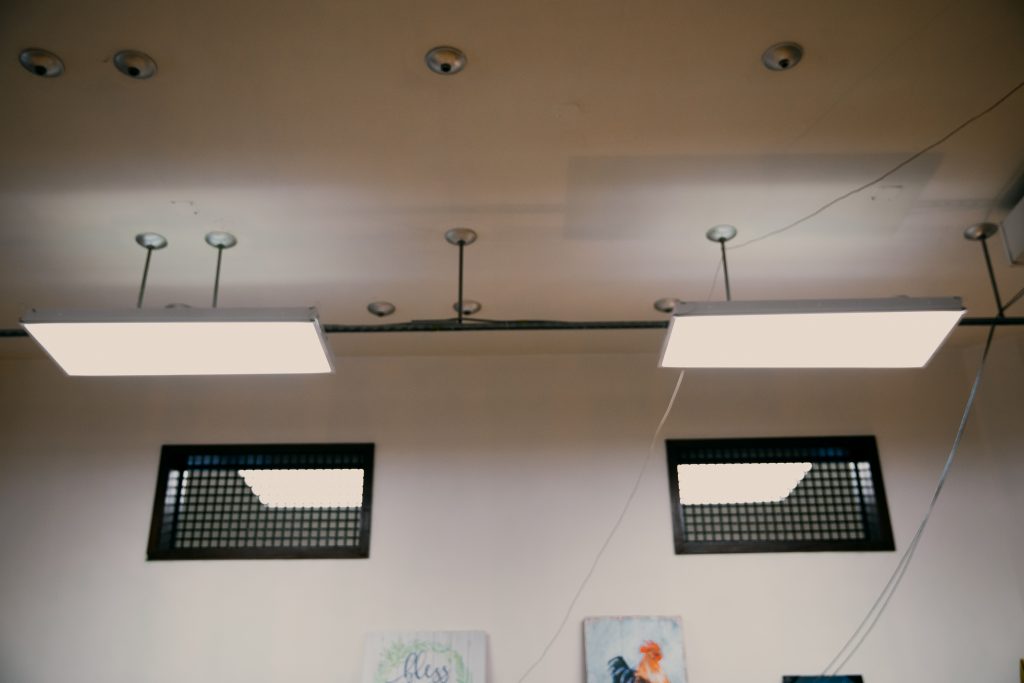
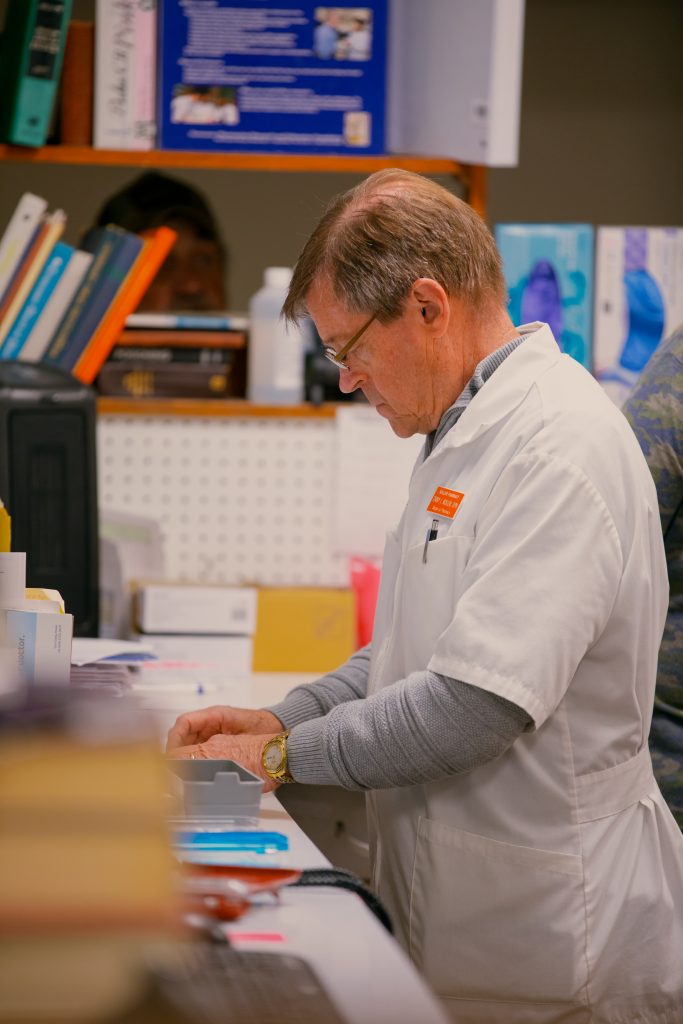

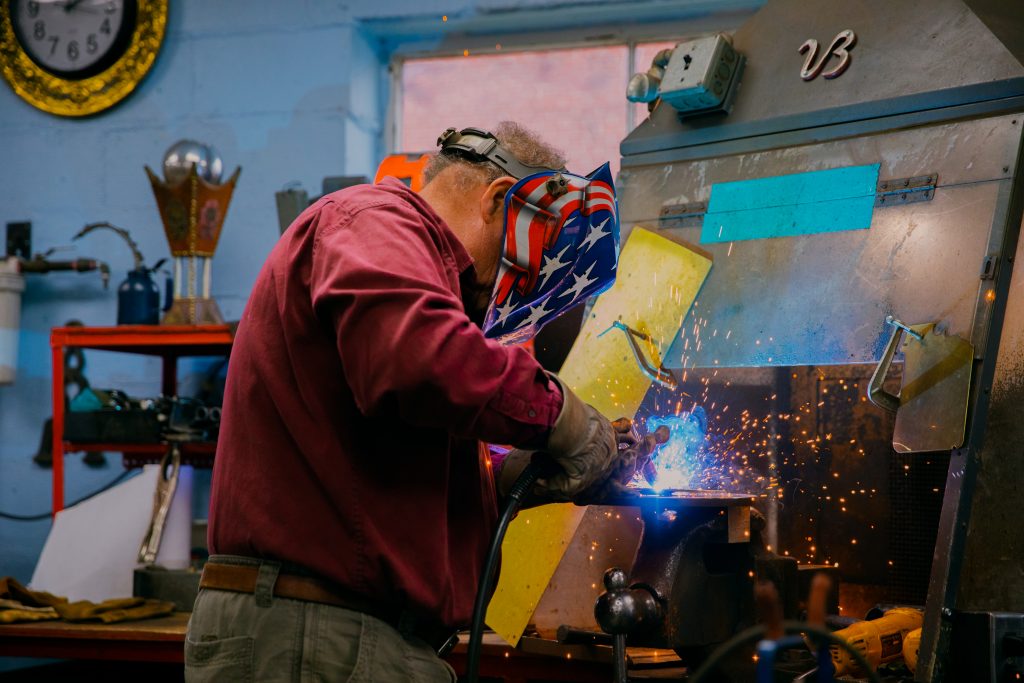

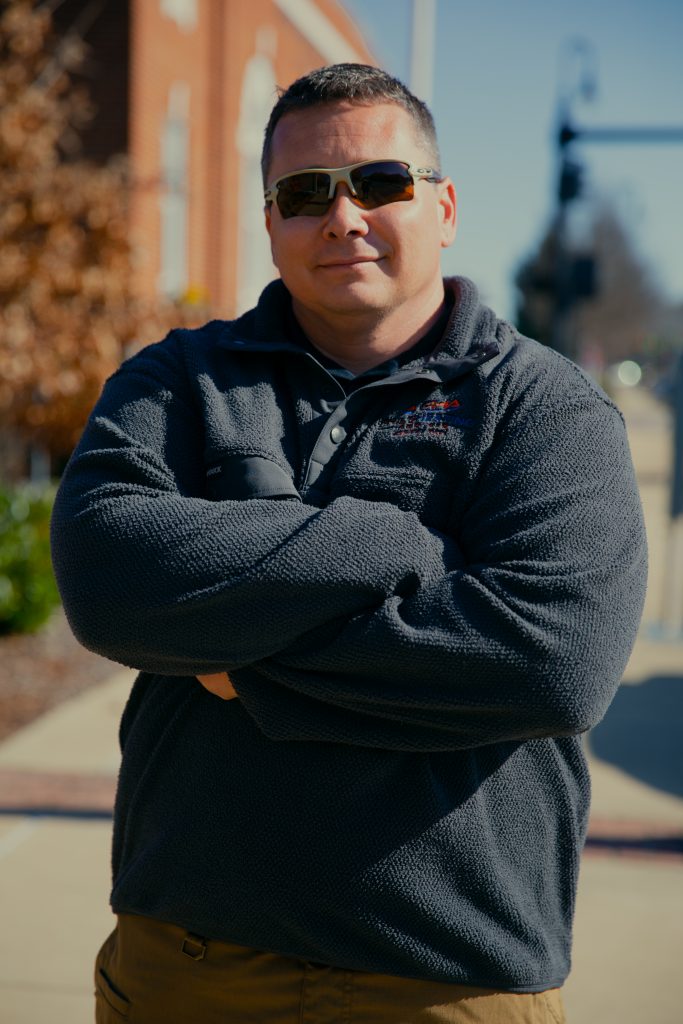
Nashville eateries enjoy the sweet taste of energy efficiency

This blog was updated on August 9, 2023 to reflect the program’s new name: Small Business Uplift.
In collaboration with local power companies and community partners, Small Business Uplift (formerly known as Community Centered Growth) from TVA EnergyRight® helps business owners with free energy-related upgrades and resources.
It’s hard to tell if the delicious smells or the boisterous laughs coming from the kitchen are the first things you notice when entering Big Al’s Deli, but both make you feel at home.
Patrons can grab a seat at one of four linoleum tables draped in plastic covers featuring bright lemons. But the best seats are the faded stools that provide a front-row view to the choreographed chaos of Al Anderson’s work.
“I call the food Southern food with a twist,” says Anderson with a big smile. “That twist is usually spice. I try to make food that nobody else in Nashville is doing. And if someone copies me, I just try to switch it up and do something different.”
Originally from Boston, Massachusetts, Anderson says he sort of fell into the business when he opened Big Al’s Deli in the Salemtown neighborhood of Nashville, Tennessee, nearly nine years ago. The food industry was a pivotal part of his early childhood.
“When I was a kid, my dad bought a bar, and my mother bought an ice cream shop,” recalls Anderson. “So at one point, I was making pizza, strawberry sundaes and banana boats at 11 years old. That was my first introduction into the food business.”
When the current space for Big Al’s Deli became available, Anderson knew the 100-year-old building came with challenges. “There was a small, little hole in the window, but everything else was padded up. All that was in this place was a hood and a sink.”
Anderson bought what he calls “collected items,” such as mismatched coffee cups, plates and silverware to save money. The promotional mugs from long-forgotten businesses give the place personality. But his other collected items, like the dual convection oven and refrigerator, gave Anderson headaches. The second-hand equipment was cheaper than purchasing new, but it would often break or wasn’t energy efficient, costing Anderson a lot of money to run it 12 to 14 hours daily.
When TVA EnergyRight® and Nashville Electric Service approached him about participating in their Small Business Uplift program, it couldn’t have come at a better time.
“In the middle of COVID-19, I’m struggling to stay afloat. Seventy-five percent of my business is corporate catering, which disappeared with the pandemic. The only thing that didn’t disappear was the bills. They still came.”
Carolyn Greer, TVA EnergyRight senior program manager, says the mission of Small Business Uplift is to focus on small businesses in communities that are often overlooked. “TVA has built a mission of service,” says Greer. “When you meet people like Al [Anderson], you see what a game-changer it is for them to come to work, save $500 a month on their bills and not have to use old equipment. The temperature is cool when they come to work and when they leave work. Things like that have been beneficial for these mom-and-pop places. It is worth it.”
“The benefits are, first of all, unbelievable,” says an excited Anderson. “I made very good biscuits. Now, with this new oven, I make fantastic biscuits. Buying equipment or getting new lighting was never in my budget. It was in my wish budget. But there’s no money tree in my backyard.”
Greer says partnering with NES helped them provide Anderson with a new, energy-efficient double convection oven, a three-ton air-conditioning unit and LED lights inside and outside the deli.
“We are public power. A governmental agency that serves the people,” says Antonio Carroll, NES representative. Carroll helped NES select several small businesses to participate in the Small Business Uplift pilot. “To see the impact of Small Business Uplift around this neighborhood is just phenomenal because you’re seeing your neighbors being uplifted. You’re seeing your community being uplifted. You’re being able to help folks who are helping themselves and help those who want to continue to help the neighborhood that they serve.”
Ed’s Fish and Pizza House, just a mile and a half down the road from Big Al’s, also participated in the Small Business Uplift program. The drive-thru establishment is tucked in the corner of J.B. Todd and Buchanan Street in North Nashville. It recently celebrated 50 years in business and is now managed by 24-year-old Anthony Williams.
“My great-uncle opened this place with his son, and they served fried fish with a side of mustard, hot sauce, pickles and onions. It was a new thing on the scene back in 1972, and it sort of became normal,” says Williams.
While their recipe hasn’t changed much in the decades that followed, a few other things have. Some of the equipment, such as their HVAC and lighting, were no longer efficient and put a strain on the small business’s monthly utility bills. Williams says he couldn’t believe it when EnergyRight and NES approached him to participate in Small Business Uplift. “The work they did would most likely not have happened. After they put in the new HVAC, there was a 20% decrease in our energy bill.”
Carroll says many small businesses participating in Small Business Uplift work with very tight budgets. If any were to close, their communities would feel the loss. “Ed’s is a multigenerational owner of this restaurant location,” says Carrol. “It’s transformational for the community. It’s also amazing for us to help this business continue on its successful path and help them reduce their energy load.”
Greer hopes the long-term impact of Small Business Uplift will not only sustain these businesses for years to come but also show a different side of their utility. “TVA and NES are not just power providers. We have this mission of service to be more than just this bill that comes in the mail.”
“Just to know that TVA took the initiative to step out and do that for small businesses, it’s kind of mind-blowing,” says Williams.
Anderson also agrees. “EnergyRight and NES care, and that’s a rarity these days. You care, and it makes a big difference.”
Related stories:
TVA EnergyRight cooks up energy savings for Alabama restaurant
TVA EnergyRight’s Small Business Uplift helps the heart of Sheffield find its rhythm
Small Tennessee town invigorated with energy-efficient upgrades to empower sustainable growth
Tennessee teachers and students can ‘sense’ the health benefits of an energy efficient school
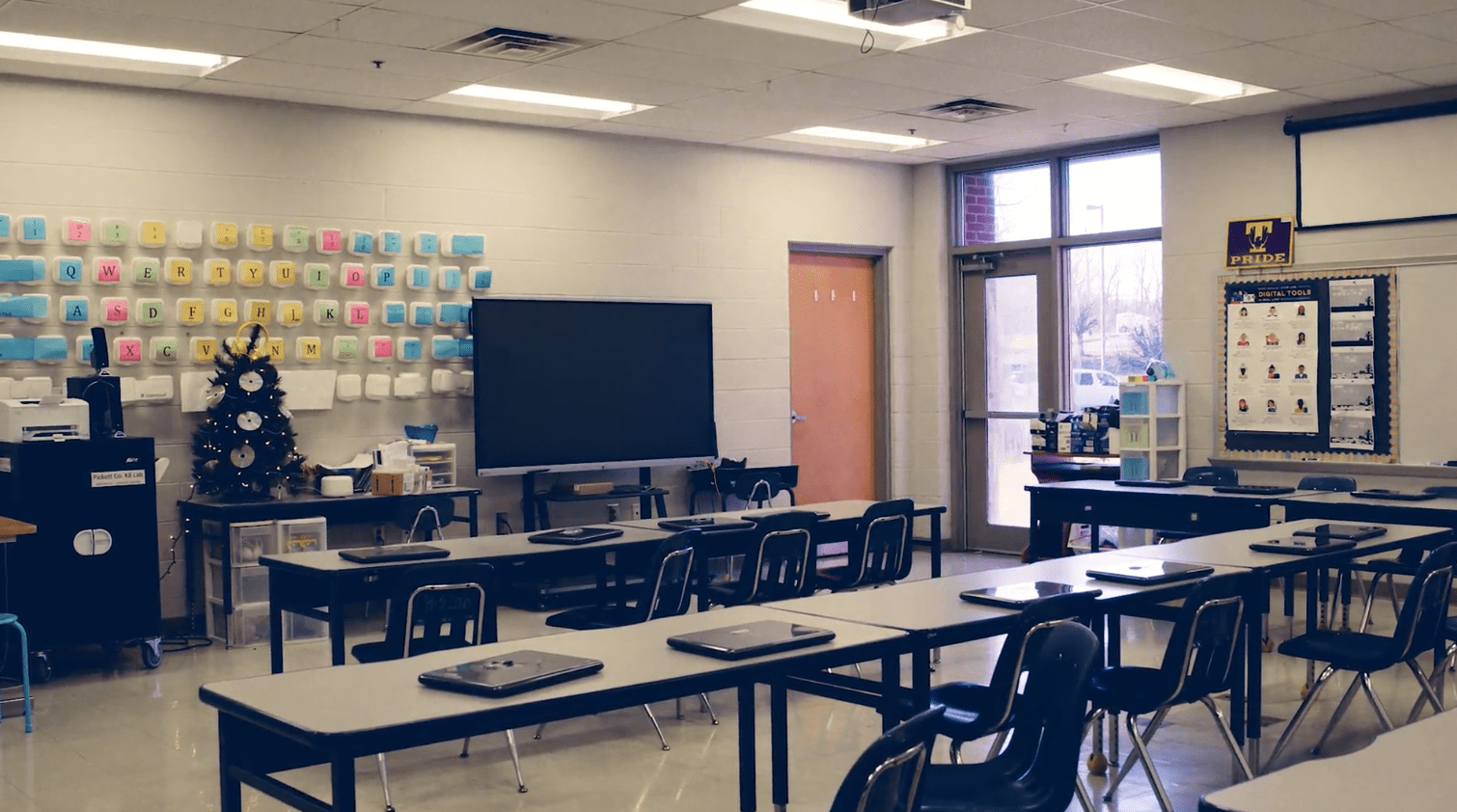
Just over 450 students and teachers pour into the Pickett County K-8 gym for an all-school assembly. Their voices echo off the concrete walls. Many don’t notice the large overhead gym lights, except for a few students – and principal Julia Barber has always been concerned for them.
“The old lights in the gym, the cafeteria and even some classrooms had a constant buzz,” says Barber. “Some of our children have sensory processing disorders and are on the autism spectrum. They would focus on that buzz and could not focus on what they needed to do. One of my students sat with his hands over his ears, and he would look and say, ‘Make it stop, make it stop.’” So, he often went into the office and put on noise-canceling headphones. But even then, the lights would flicker and agitate him.”
“We try to live within our means”
Pickett County, Tennessee, is just over the Kentucky state line. In the summertime, visitors head to the county’s main attraction — Dale Hallow Lake. The majority of residents are retired and live on fixed incomes. Diane Elder, director of schools, says it is one of the main reasons why the school district hasn’t asked voters for a tax increase in 15 years.
“We take pride in not putting that burden on them. We try to live within our means. We don’t have some of the things many larger schools have, but we feel like we have a really good school system.“
With a tight budget, Pickett teachers rely on fundraising. The school gives them two weeks to raise money for classroom supplies like copy paper, pencils and notebooks. “We also do some school-wide fundraisers,” says Barber. “Those are for things for copier maintenance that are not necessarily included in our budget from our central office. We spend a lot of out-of-pocket that I don’t think most people realize.”
Pickett’s school staff has been so self-reliant for years that Elder could hardly believe that anyone would help them improve their school for free.
Elder recalls attending a directors’ conference when Clay Hoover, a program manager at TVA EnergyRight, approached her with an interesting offer: the chance to join a pilot program, with nine other schools, called School Uplift. TVA engineers would audit their buildings and note where the schools could improve their energy efficiency. Each of the participating schools would enroll their maintenance personnel in a 12-month energy management training course — all at no cost.
“I said, ‘Clay, you know, this just sounds too good to be true.’ But he said, ‘I promise you, there’s no catch here.’”
“Diane’s got a tough job,” says Hoover. “She wears so many different hats. She is the maintenance manager, the transportation director and the director of the schools. And now we’re asking her to wear a hat as an energy champion, and she’s really taking it on just like all of her other roles. She’s done an excellent job at it, and we’re seeing great success in Pickett County because of her leadership.
The audit revealed that none of the air filtration systems in the HVACs were working at the K-8 school. The units were installed in 2000, after the construction of the building. Elder believes that the lack of filtration led to an uptick in sinus infections after holiday breaks. “It was just the inside air circulating, what little it did circulate. Coming back from winter break, there was almost a stale, musty smell to the building.”
Eighth-grader Johnny Jenkins recalls how his allergies would flare up. “My nose would run, and I could feel the drainage in the back of my throat. It was awful, and I was tired all the time. It’s hard to do your work and pay attention.”
Elder says the School Uplift energy management training helped her learn a lot about the building. She also realized there were plenty of low- to no-cost energy-saving solutions she could easily implement. “Simple things, just like flipping a light switch off when you walk out of the room. We asked the teachers to take out the small mini-fridges and coffee pots from their classrooms.”
“As a teacher, you don’t really know that somebody is paying the electric bill,” says Barber. “But as an administrator, when you actually see what that electric bill runs, you think, ‘Oh, now we’ve got to do better.’”
At the conclusion of the 12-month training program, TVA EnergyRight, in partnership with Volunteer Energy Cooperative, awarded Pickett County K-8 with a $200,000 grant. The State of Tennessee’s Energy Efficient Schools Initiative matched it, for a total of $400,000 to use for building upgrades to provide more energy savings to the school.
“When Ms. Elder called and said y’all have been awarded the grant, I mean, I literally ‘yee-hawed’ in the office,” recalls Barber. “This was an opportunity of a lifetime. As a rural district, we don’t have a lot of school funds. This grant allowed us to upgrade everything to more efficient HVAC units and lights.”
While the grant was for their K-8, Elder says it helped the district redirect money into materials and supplies for the high school. “We are replacing some of the older HVAC units that we might not have done before because we didn’t have the budget.”
A difference they can see and hear
Jenkins says he’s his sinus infections are practically gone, thanks to the new HVACs and working air filtration. “I’ve noticed a big difference. I’ve been able to breathe easier.” But it wasn’t until new, flat LED light panels were installed in the hallways and classrooms that some students could truly see the difference from the School Uplift grant.
“When you walked into the school before, things looked like they were in a fog,” says 8th grader Aubree Whittenburg. “Kind of like everything was yellow.” She loves the new LED lights that were installed with the grant money because they make everything look brighter. Classmate Penny Daniels agrees, saying that the LED dimmers add a special touch. “With the old lights, there were only two settings. You couldn’t dim them. With the new ones, you can put them in different modes, have them dim or have them bright.”
Barber says teachers also use the dimmers to help calm a rowdy class. “That is a major positive for us, especially at the elementary level.”
She says the students agitated by the old lights have also seen a difference with the new LEDs. “The lights don’t buzz or flicker, so they can participate in activities in the gym, and they don’t have to wear headphones.”
Both Barber and Elder say they’re thankful for the School Uplift program, and they encourage other districts in the valley to participate. “We would not have been able to do this,” says Butler. “Teachers are so appreciative, and students, even though they might not have the words, are not in a yellow building anymore.”
Related stories:
Alvin C. York Institute makes the grade, saving over $40,000 in TVA EnergyRight School Uplift pilot program
Bledsoe County Schools transform their energy training into cool savings
TVA EnergyRight cooks up energy savings for Alabama restaurant
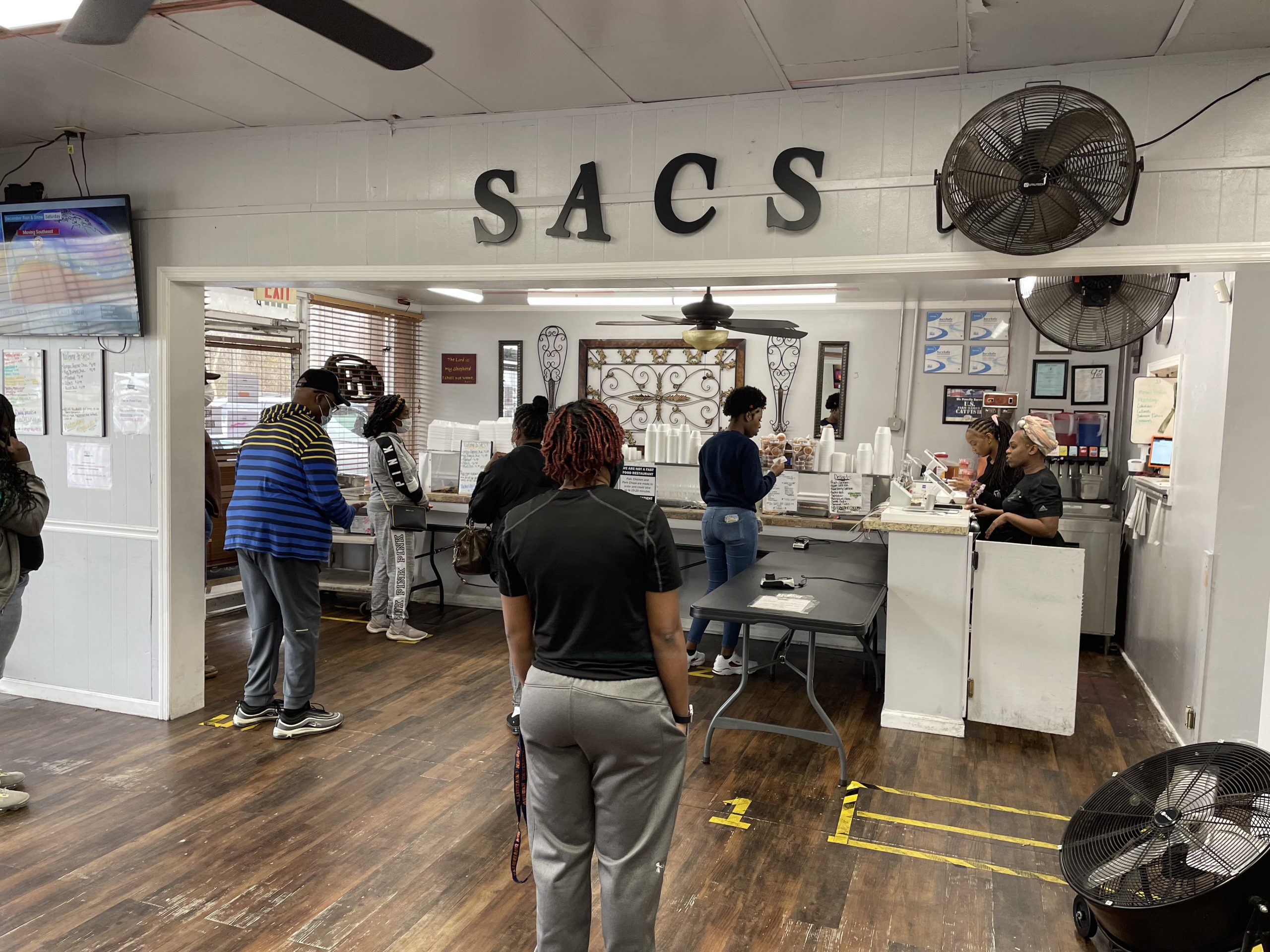
This blog was updated on August 9, 2023 to reflect the program’s new name: Small Business Uplift.
In collaboration with local power companies and community partners, Small Business Uplift (formerly known as Community Centered Growth) from TVA EnergyRight® helps business owners with free energy-related upgrades and resources.
Standing in a line 20 people long for lunch on an empty stomach requires a certain grit, especially when each hungry patron can smell today’s special wafting past them in to-go containers. Once inside, the mouth waters as the eyes dance across the food buffet — chicken and dumplings, fried catfish, green beans and sweet potatoes. It’s a gift for the senses, all cooked up by Sarah Douglas.
“I think when people eat, it makes them happy,” says Douglas with a smile.
If there is a “happiness expert” job, Douglas is a prime candidate. But for now, she finds joy as the co-owner of Sac’s Kitchen in Huntsville, Alabama, with her son, Carlos Burwell.
When it comes to her food, Douglas doesn’t cut corners.
“All my food is fresh,” says Douglas emphatically. “All my greens are fresh, nothing bad, nothing canned, nothing frozen. Our motto is ‘Not from can, all from hand.’”
If you grew up in North Huntsville in the 1980s and ‘90s, chances are you ate at Douglas’ house or know someone who stopped by hoping she had made her creamy mac-n-cheese.
“I always had friends want to come over just to eat,” recalls Burwell. “I would try to play tricks on my mom and act like I want something I think she can’t cook. She can come up with stuff, put it together and make it work. She’s a great cook.”
About a decade ago, Burwell asked his mom if she wanted to use her talents in a bigger kitchen. He had found a small place for sale on Mastin Lake Road. “We threw our hat in the ring,” recalls Douglas. “About six other people wanted the same restaurant. The owner of the building told my son somebody had to give him a start, so he gave us our first opportunity.”
Even though the building had previously been a restaurant, Douglas said, it didn’t come with many appliances. “We didn’t have the big machinery to cut and slice the food, so I had to do that by hand.”
Settling on a name for the place was a lot easier. Sarah’s nickname growing up was Sack, but she doesn’t know how she received that moniker. “So when we opened the restaurant and Carlos said, ‘Why don’t we name it Sack’s, after you?’ I said, ‘Nah, we’ll drop the K, we’ll name it Sac’s after both of us. Sarah and Carlos.’”
Like with any new business, the first couple of years for Sac’s Kitchen was tough. They didn’t have any money to advertise, so they relied on word of mouth, hoping people would find them.
“The restaurant is somewhat isolated, and the neighborhood is underserved with businesses,” says Joe Gehrdes, Huntsville Utilities director of community relations. He grew up in Huntsville and has seen the evolution of the northside. “North Huntsville needs help, but it is on the rebound.”
The food coming from the kitchen didn’t go unnoticed for too long as word spread beyond the 35810 ZIP code. “Some celebrities have stopped by, and folks from out of town tell us they made a special stop because they heard about Sac’s,” says Burwell. “But it’s this community that really rallied around us in the beginning.”
The restaurant eventually expanded, taking over the empty businesses next to it. Douglas says all their success doesn’t necessarily translate to a considerable income. “We’re definitely not rolling in money. The utilities keep getting higher. The cost of food and the food containers keeps getting higher. Then your equipment breaks down every other day.”
For years, Sac’s Kitchen got by using two residential stoves that didn’t last very long. “We went through at least eight kitchen stoves because we couldn’t afford to buy the commercial stoves,” says Douglas. “They’re not meant for cooking the big pots and pans. We’d run those stoves from the time we got here, so basically from seven to seven.”
Gehrdes credits TVA EnergyRight for recognizing that small businesses need a program to help them save on their utility bills. “They struggle just like residential customers do from month to month paying their bills, and TVA EnergyRight came to the table wanting to help.”
When Douglas learned Sac’s Kitchen qualified for TVA EnergyRight’s Small Business Uplift program she said she fell to her knees. “Thank God, somebody is helping us. It’s amazing.”
“Small Business Uplift is a program that focuses on small businesses within underserved communities,” says Carolyn Greer, EnergyRight senior program manager. “It was created to focus on those folks and really help people save money. We don’t want electricity to be a factor in making the hard decision of whether to stay open or not.”
Greer says the biggest energy users in restaurants are often refrigeration and cooking equipment. “Small Business Uplift uses grants to invigorate small businesses with energy efficient upgrades and access to energy resources.”
The project not only gave Douglas and Burwell the opportunity to install a commercial-grade stove, but they also received an energy efficient commercial-grade ice machine and air conditioning units near the food buffet.
“It feels like Hell’s Kitchen in the summertime. It’s hot outside, it’s hot near the food bar, and there is heat coming from the kitchen,” says Burwell.
Douglas says EnergyRight contractors worked around the restaurant’s schedule, so they didn’t have to close a single day. They also installed new interior LED lights, and Douglas has noticed how much it’s brightened up the place. She’s also happy to finally have lights outside the building.
The future for Sac’s Kitchen looks bright. Douglas says she has a few years left in her before she’s ready to hang up her apron. In the meantime, her granddaughter, Burwell’s youngest child, Little Sarah, shows interest in learning the ropes of the restaurant and often brings her homemade baked goods to sell to customers.
“What I love about this place is the independence and the room to grow and create something for my grandchildren,” Douglas says. “Sac’s Kitchen will hopefully be in my family long after I’m gone, and that’s the best part about it. I’ve worked since I was 15 years old. I opened this restaurant when I was 53, and now I’m 62. It’s a blessing, a lifelong dream.”
Related articles:TVA EnergyRight’s Small Business Uplift helps the heart of Sheffield find its rhythm
Bledsoe County Schools transform their energy training into cool savings
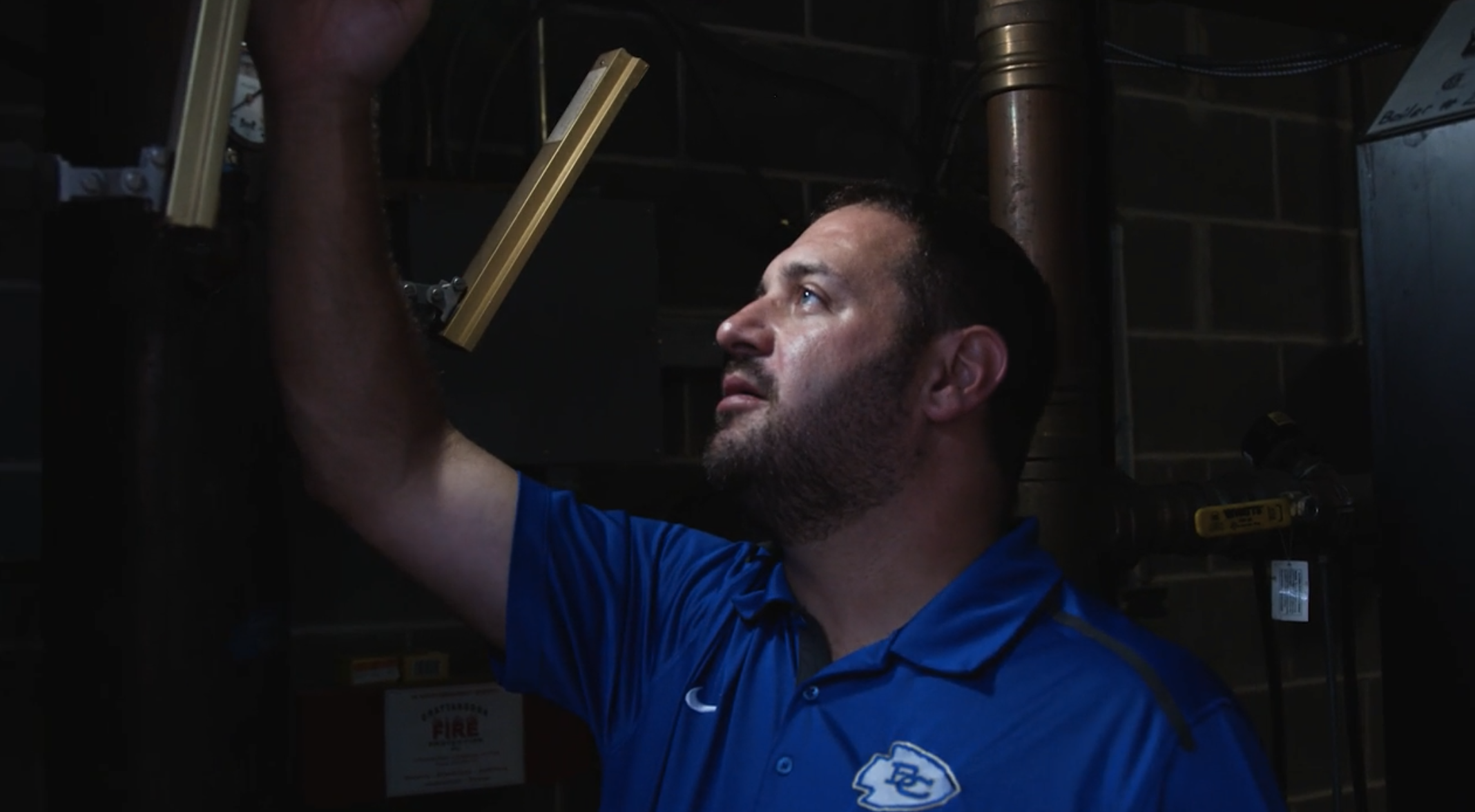
Brian Turner is up before the sun rises over the Sequatchie Valley in Middle Tennessee. His family is still sleeping as he drives through the thick morning fog to his father-in-law’s farm to help corral about 40 cattle for a morning weigh-in. He also sets out the feed and cuts some additional hay.
“Nothing you do on the farm you can do halfway. Farming is hard work,” says Turner. “When something breaks on a farm, you don’t buy new. You make it work and fix it.”
He has never shied away from hard work. On the contrary, Turner leans into it with a purpose. The people of Bledsoe County are raised to believe in hard work. It’s not uncommon for many to hold down two or three jobs to make ends meet in one of the state’s poorest counties. The county seat of Pikeville sits in the northern half of the valley, surrounded by the walls of the Walden Ridge to the east and Little Mountain to the west. The Sequatchie River passes through the eastern section of town. It’s an area rich in natural beauty but lacks the industry to keep many employed here.
“We make sacrifices when we stay here,” says Turner.
Unemployment hovers at 6%, nearly double the state average. Those who do find work have to travel outside the county. Turner considers himself fortunate to have a full-time job in town as maintenance, transportation and attendance supervisor at the Bledsoe County School District.
“We start in the morning with the bus runs. We always want to make sure the kids are getting to school safely,” says Turner. He then meets with his maintenance staff, overseeing three elementary schools, a middle school, a high school and a career tech center. Next, he works on the attendance records for each school and follows up with kids who are struggling to make it to class. The decade he’s worked at the school district has been eye-opening for Turner.
”I knew we had low-income families. But when I started working for the school district, it was way more than I expected. A lot of those families lean on the school to help them.”
School systems like Bledsoe County can become de facto childcare and meal service providers for struggling families. The district depends on property and sales tax dollars for its budget, but with just under 15,000 county residents, the tax base is insufficient.
“The amount of dollars the county can put back into the school system is minimal,” says Mike Partin, CEO and president of Sequachee Valley Electric Cooperative (SVEC). “The county school system is always looking for opportunities where they can bring in some money to help the school system to make a better school environment for the rural kids of Tennessee. That’s where TVA EnergyRight’s School Uplift made the difference.”
School Uplift helps districts make the energy efficiency grade
The School Uplift pilot kicked off in January 2020 with ten Tennessee schools, including Bledsoe County High School and Pikeville Elementary. Led by EnergyRight Program Manager Clay Hoover and his team, the 12-month program provides schools with comprehensive energy management training. The program has two specific goals: to reduce a school’s utility cost to redirect money back into funding education and to improve the learning environment for teachers, staff and students.
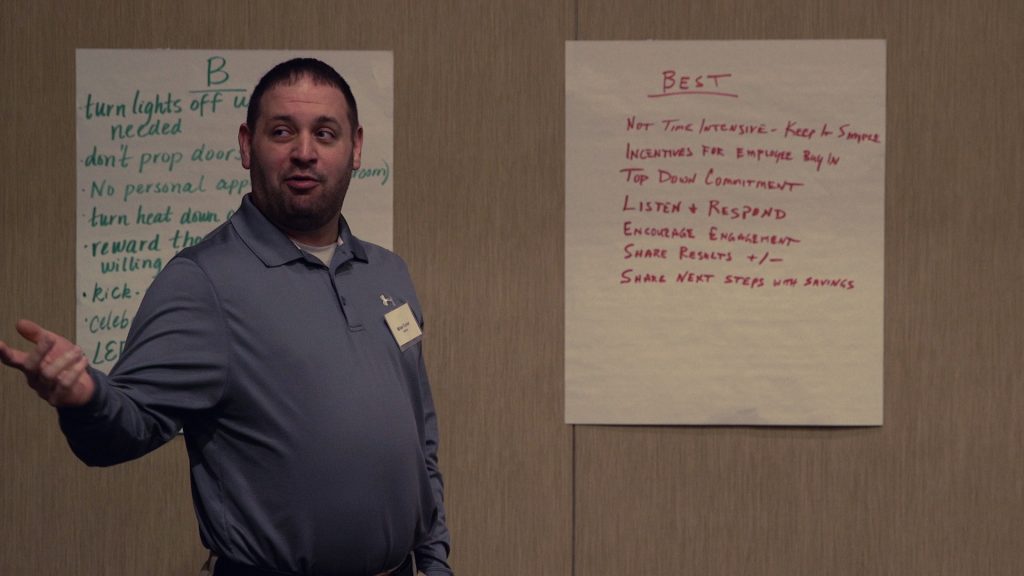
First, TVA EnergyRight engineers met with administrators from each school to conduct an energy audit and discuss energy efficiency pain points. School leaders then met throughout the year – in person and virtually – to learn about strategic energy management best practices, bounce ideas off each other and set energy efficiency goals. Hoover says these sharing sessions were beneficial for participants.
“A lot of schools were running equipment unnecessarily,” says Hoover. “They were leaving things on unnecessarily and had tight constraints on their control systems. By changing the operations, the schools can save a significant amount of energy.”
Hoover says Turner’s natural leadership shined in this setting. “Brian freely shared his expertise with the whole cohort,” says Hoover. “Other school directors looked to Brian for advice on how to implement energy-saving opportunities. You can quickly tell that he cares a lot about the school system and the kids and trying to improve the learning environment.”
Diane Elder, director of schools in nearby Pickett County, says Turner often called her early in the morning to exchange ideas. Many of the conversations happened while he was on the farm. “I’m barely waking up, and Brian’s talking excitedly on the phone about his ideas, and I can hear cattle mooing in the background.”
“We can’t have kids trying to learn in hot classrooms.”
Bledsoe County High School’s aging cooling tower has been Turner’s albatross. “We knew we had to replace the cooling tower because it was causing us lots of problems. TVA EnergyRight’s audit confirmed it was burning lots of energy,” says Turner.
A typical home HVAC system removes heat from inside the house and sends it to the outside unit that vents it. The high school uses a water system. It relies on a cooling tower to lower the temperature of the water and the air around it before sending the colder air through the school’s ductwork.
The cooling tower was always on the verge of breaking, and Turner was frustrated that he couldn’t fix it. “If the cooling tower stopped working, there would be no cold air in the building during the early summer, fall and spring months.”
Turner frequently pleaded before the school board for a new tower, but members were concerned about the $200,000 price tag. It’s roughly the maintenance team’s budget for an entire school year without factoring in salaries. “Being in the small rural districts, we don’t get a lot of extra money to spend on big maintenance projects.”
Turner thought he would never get the tower replaced. But then his schools successfully completed the School Uplift pilot and EnergyRight rewarded Turner and his team with two grants. The high school received a $200,000 building upgrades grant, and the elementary school was awarded a solar demonstration classroom grant. In addition, Tennessee’s Energy Efficient Schools Initiative matched EnergyRight’s building grant for a total of $400,000. “Tennessee has the best teachers in the nation, and we need our classrooms to match that standard to give students the best learning opportunity,” says Scott Slusher, EESI deputy director. “Making our schools more energy efficient will pay dividends for years to come.”
Turner says the grant money took an enormous weight off his shoulders. The new cooling tower was installed in October 2021 with enough money left over to complete other energy-saving projects.
“We were slowly trying to change the lighting and replace several older HVAC units, but the School Uplift grant helped us do that all at once,” says Turner.
EnergyRight says the pilot schools saved nearly 20% on their annual energy bills from behavior changes alone. Hoover says the additional facility upgrades will have lasting benefits. “LED lighting, energy efficient HVACs and the new cooling tower will further reduce energy consumption and costs over time. That empowers schools to redirect those savings to what matters most – educating children.”
Utility partnerships enhance the mission to help all customers
Hoover and Partin credit the strong partnership between EnergyRight and SVEC as one of the reasons for a successful School Uplift pilot.
“The only way you can achieve any kind of success is through partnership,” says Partin. “Unfortunately, there’s not one group or one agency that has enough resources to hit one out of the park. But when folks come together – SVEC standing shoulder to shoulder with Bledsoe County Schools and TVA EnergyRight’s School Uplift program – we’re starting to see the whole process bear fruit.”
Turner says his participation in School Uplift reshaped how he sees EnergyRight’s role. “When I started this program, SVEC was our electric provider, and TVA was our electric producer. After going through this program, they’re partners with us. They are the resources to help us.” The partnership has lasted. Turner says he still talks to the same TVA engineer who audited his schools at the beginning of the School Uplift pilot.
Opportunities are also expanding in Pikeville, highlighted by the recent announcement of a Minnesota-based manufacturing plant expanding its operations into Pikeville. It’s expected to produce 74 jobs and pump much-needed revenue into the community.
Nevertheless, Turner will still be back at the farm bright and early. Hard work doesn’t stop in Bledsoe County.
Related stories:
Home Uplift gives customers a hand up in creating a healthy, energy efficient home
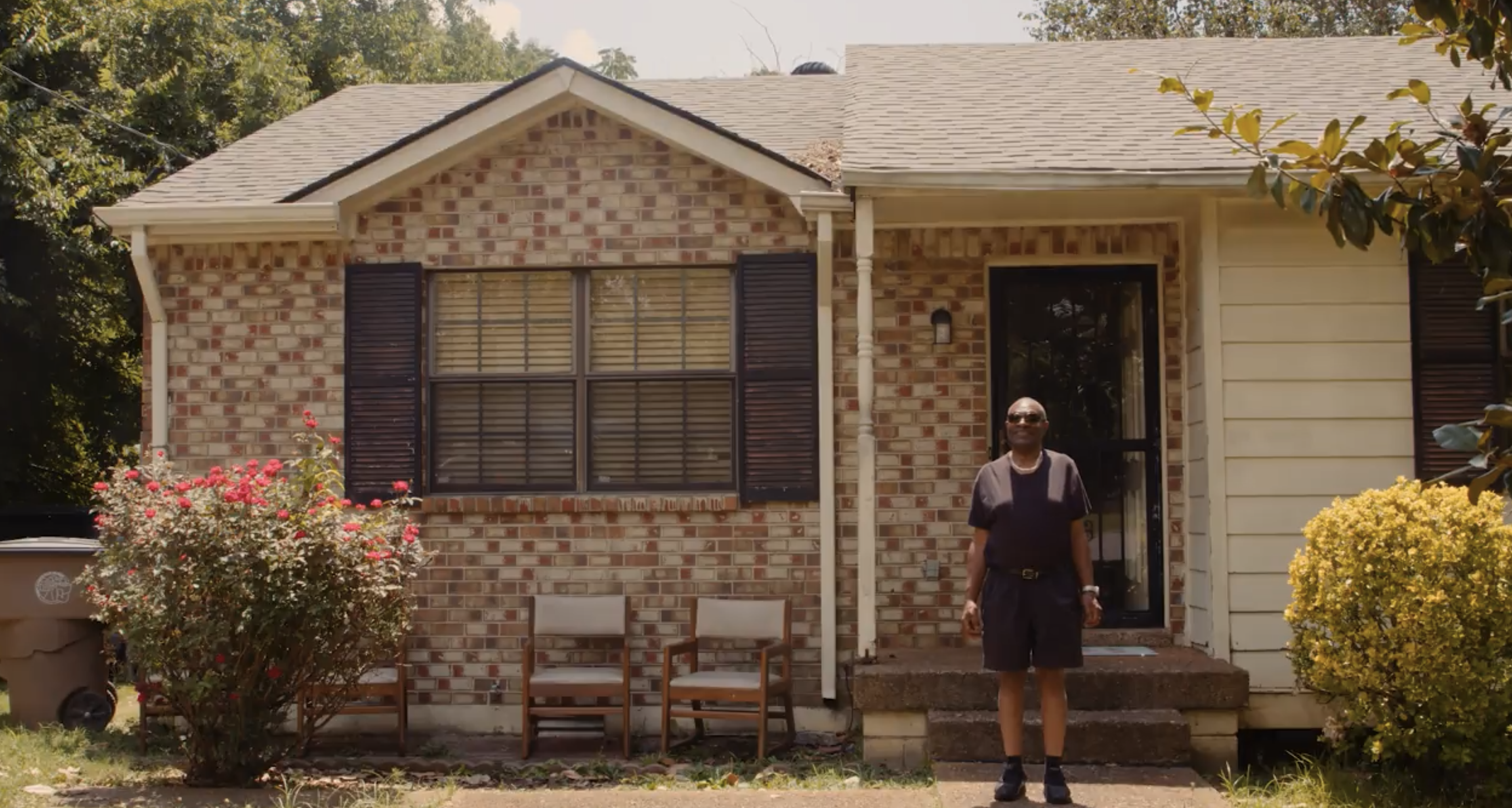
James Pardue is a little frustrated with the black car parked in front of his Antioch home. He purchased the used vehicle weeks ago to fix and resell, but he can’t get the car engine to turn over. Resigned to worry about it another day, he heads inside his home. His steps are deliberate and surefooted.
As he crosses the threshold of his home and into the living room, he calls out in his raspy voice, “Alexa, play music.”
“Playing Steely Dan,” responds Alexa, the voice-activated virtual assistant that’s also the home’s thermostat.
The rock music competes with the 24-hour cable news coming from the TV in the living room, but it has turned Pardue’s mood around. When he’s happy, he sings to himself. If friends stop by, he will likely encourage them to join him. He just turned 60, but he has the lightness of a much younger man.
“It’s comfortable for me to have my own space,” says Pardue with a smile.
He’s been in the same house since 2006. Most of the furniture hasn’t moved around much during that time, and that’s for practical reasons. Pardue was diagnosed with a damaged optic nerve that caused him to go blind when he was three months old. He navigates his world with a lightness of touch, and at times with a white cane and something he calls his “third eye.”
“God blessed me with no physical sight, but he guides me spiritually through my third eye, which is the spiritual side,” he says, placing his finger in between his eyebrows.
Pardue says his parents didn’t treat him any differently from his siblings, and that upbringing contributes to his overall mindset. “I grew up just as a normal person, says Pardue. “I was a go-getter, so I would go get it.”
Pardue has run a telemarketing business and a ministry, and he buys and sells cars. He feels uncomfortable sitting around and waiting for someone to help him. He is fiercely independent. So when his friend, Darlene, told him about TVA EnergyRight’s Home Uplift, he saw it as a hand up, not a handout, to make the necessary energy-saving improvements to stay in his home.
“Home Uplift is someone going the extra mile for someone else because they know there may come a time for all people when they face their own obstacles,” says Pardue.
“Home Uplift has always been about giving people in the communities we serve a hand up, not a handout,” says Bethany Kitch, Home Uplift senior program manager for TVA EnergyRight. “Two of the top priorities for EnergyRight are health and safety. A well-insulated home reduces the risk of illness, which means more days at work and fewer days at the doctor’s office. That’s one of the many reasons Home Uplift fits directly with our mission of making lives better for the people in the Valley.”
His thermostat was losing him a lot of money
Derryberry’s Heat & Air has partnered with TVA EnergyRight and Nashville Electric Service on several Home Uplift projects. Derryberry’s Vice President John McEachen recalls meeting Pardue for the first time. “When I pulled up to his house, he was standing at the end of the driveway waiting on me and yelled out, ‘Hey John.’ He walked me around the house, and he was just a really nice guy.”
During one of the home audits, a contractor noticed the temperature on Pardue’s thermostat was set to emergency heat. McEachen says emergency heat can be a helpful setting when temperatures dip below 20 degrees. It provides supplemental heat in addition to the output from the heat pump—or, if the heat pump is malfunctioning, emergency heat can be the primary source. But McEachen warns it can be costly to run.
“I would have to ask somebody what the temperature on my thermostat is set to,” says Pardue. “And I would push the buttons on the thermostat to make it comfortable. But sometimes, I would forget where I set it at.”
McEachen says a team from EnergyRight, NES and other contract partners decided to install a smart thermostat for Pardue so he could control the temperature with his voice. “We figured it would help him know what the temperature is in his home at all times,” says McEachen.
NES has partnered with TVA EnergyRight on Home Uplift since 2018. Sylvia Smith, vice president of customer services of NES, says the program has helped the utility serve a diverse community. “Our customers are everyone from senior citizens and transplants to major corporations. We serve urban and rural Nashville, along with six surrounding counties. With Home Uplift, we’re able to keep customers who have been with Nashville Electric for decades and help them stay in their homes and also afford the energy efficiency renovations they need.”
“Local power companies like NES are crucial to the Home Uplift Program,” says Kitch. “They understand their communities, and they know what their communities need. The program participants are their neighbors, family and friends. The Home Uplift program is close to the local power company’s hearts.”
Home Uplift has given Pardue greater independence and the confidence to make energy-saving choices for years to come. He jokingly says that if it could help him fix his used car, that would be icing on the cake.
Small Business Uplift helps the heart of Sheffield find its rhythm

This blog was updated on August 9, 2023 to reflect the program’s new name: Small Business Uplift.
In collaboration with local power companies and community partners, Small Business Uplift (formerly known as Community Centered Growth) from TVA EnergyRight® helps business owners with free energy-related upgrades and resources.
The downtown square in Sheffield, Alabama is an inviting place. The flower shop, Lola’s, welcomes customers with a symphony of fragrances as owner Carl Casiday prepares a new arrangement. Red Clay Table’s sidewalk sandwich board announces the daily specials. Regulars drop in and the waitress will ask after their family. Tourists breeze through for a quick bite before resuming their pilgrimage to one of the nearby music studios that recorded the sounds of Wilson Pickett, Aretha Franklin and Jason Isbell.
Sitting just a couple blocks outside the square is The Ritz Theatre, its vintage neon sign is glowing as it welcomes theatregoers, inviting them to take a seat in decades-old theatre chairs, surrounded by Art Deco walls with neoclassical borders. As the stage lights dim, the magic of live theatre, of live storytelling, will whisk them away.
“You’re connecting with people at the heart level,” says Christi Britten, Executive Director of The Ritz Theatre and the Tennessee Valley Art Association. “It is the center of empathy and compassion, a center of the humanities, a center of human expression. Without theatre, there is no drama.”
Places like The Ritz are the reason TVA EnergyRight launched Small Business Uplift. “We’re partnering with local power companies to focus on small businesses to help people make energy-saving upgrades that can sometimes be out of reach,” says Carolyn Greer, EnergyRight senior program manager.
The Ritz Theatre came to life in 1928 as a silent movie house and thrived for decades, but competition nearly flatlined The Ritz. “A new movie house was built around the corner in the 1950s that had more amenities for film,” recalls Mary Settle Cooney, the former Executive Director of the Tennessee Valley Art Association. “So, they closed this building [The Ritz], and it was not used for anything except a youth center for a short period of time. It sat dormant for over 25 years.”
Cooney led the charge in the early 1980s to acquire The Ritz Theatre to support a growing children’s theatre program funded by the newly created TN Valley Art Association.
“I grew up here, and I had never been to this theatre,” says Cooney as she glances around The Ritz’s performance hall that still has the Art Deco walls from its 1930s renovation. “I walked in here with some other board members one day, and my heart just stopped. It was in practically the shape it is in today. Structurally, it was sound as a dollar, and the acoustics were phenomenal.”

Cooney says some slight upgrades were needed, but a year after the purchase, new life was pumping through the aisles as The Ritz was reborn into a live theatre venue. “The Ritz has been carefully renovated to a period that was important to our community,” says Cooney. “Audiences were seeing live theatre, and we gave our local actors and directors a chance to perform.”
The Ritz relies not only on patrons to keep the center stage lights on, but also on corporate sponsors such as Sheffield Utilities.
“The education outreach program helps supplement what’s happening in our schools,” says Steve Hargrove, general manager of Sheffield Utilities. Cooney agrees, “We are an arts organization that helps people and kids find who they are. We expose them to things they ordinarily would not have the opportunity to participate in. It’s a godsend.”
Hargrove was born and raised in the area and watched the city and people in the community invest in downtown businesses in recent years. “A lot of our buildings in downtown Sheffield are older buildings that have been renovated. But many still have the same lighting system, and it’s expensive. The air conditioner units are 25 years old.”
In 2021, EnergyRight approached Hargrove and Sheffield city leaders with an opportunity to engage small businesses that often don’t qualify for incentive dollars from other programs. Small Business Uplift invigorates these businesses with energy-efficient upgrades and access to energy resources. Greer says it was helpful to have community leaders guide the candidate selection process.
“As we began talking with Christi at The Ritz, we really, truly got a good understanding of what all they do and how they bring people together,” says Greer. “They’re pulling people into that community and giving them a reason to come downtown.”
“The Ritz has been the heart of downtown development initiatives in the past,” says Hargrove. “We knew that this type of financial support would free up money The Ritz has invested into its long-term plans.”
“Immediately, I noticed the new LED lights were so warm, and it just really makes an intimate feeling. As soon as you walk in, it doesn’t feel like a fluorescent light. So, it really cozies the place up,” says Britten as she looks around the lobby. In addition to the lights, crews installed a new HVAC unit, a giant energy-efficient fan in the workshop and a new cooler for the concession area.
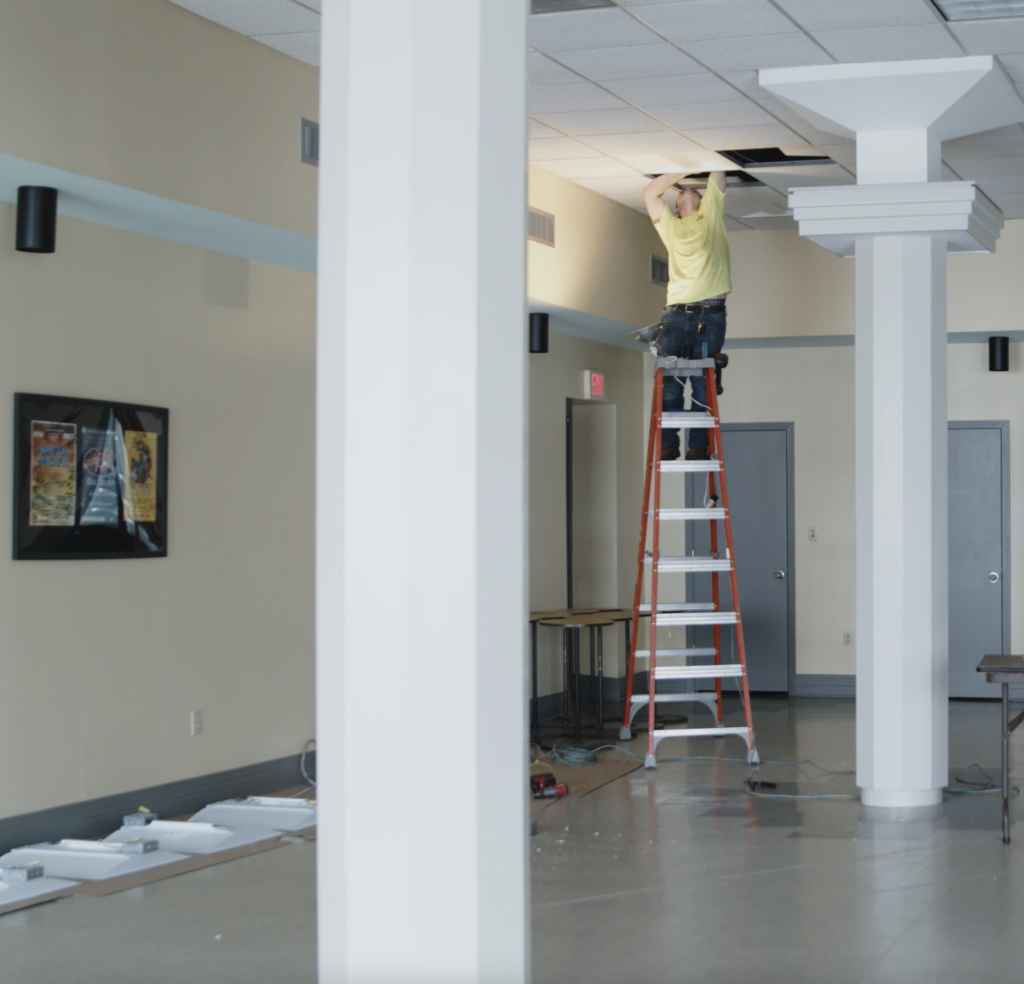
Britten says the master plan for The Ritz envisions the space to be a Community Arts Complex that integrates other buildings on the block. The TN Valley Art Association owns the dance studio across the street, a public green space and a bandstand. She sees these spaces full of many art disciplines.
“We now have the ability to create programs, make upgrades and create a space for educational outreach because we’re saving on our energy bills,” says Britten.
“It’s truly rewarding to see the look on people’s faces once they realize the magnitude of what Small Business Uplift can do for them. It’s really a special thing to be a part of,” says Greer.
For a time, it seemed like The Ritz Theatre was destined to fade into the backdrop, its heyday a distant memory. Now its future is as bright as the neon marquee on a clear, dark night. The heart of Sheffield is stronger than ever.
Metro Nashville Public Schools harness the power of Demand Response to meet savings goal

The amount of energy needed to power an entire school district can be hard to fathom, but it’s Bruce Rasnick’s job to make sure every student, teacher and staff member gets the electricity they need to power the computers in the classroom, ovens in the cafeteria and the field lights for a Friday night game. But as Metro Nashville Public Schools Energy and Conservation Project Manager, Rasnick also has to encourage everyone to use less energy. He has a multi-million dollar budget to worry about, a budget that gets smaller every year.
“It’s not unlike the budgets we make at home, but on a bigger scale,” says Rasnick with a knowing laugh. “We tell our kids to turn off the lights when they leave a room. I have to make sure that happens for 150 school buildings.”
When Rasnick was hired three years ago, the district also solicited the services of an energy consulting firm. The new team quickly went to work forming MNPS Energy. They wanted to reduce the district’s energy use by 16% over the next five years for a savings of nearly $10 million. But it wasn’t just percentages motivating Rasnick and his team. They knew saving money within their department could impact students and teachers while significantly reducing their overall carbon footprint.
“There’s always a worry each year that money will be taken away from our school district and the first concern is how will that affect our students’ learning environments?” says Rasnick.
“The first year we looked at really low-hanging fruit, such as getting people to turn the lights off at the end of the day,” says Rasnick. “It’s basic behavioral things that we all do at home, but we forget when we’re not paying the bill.”
MNPS Energy then turned their attention to the district’s participation in TVA EnergyRight’s Demand Response program which was already saving them money, so they rolled it out to more schools and administrative buildings. “The great incentive with this program is that not only are we reducing our energy consumption and saving money during a Demand Response event, but we are also getting paid to participate,” says Rasnick.
Extreme weather events – really hot or really cold days – can strain the power grid as more people use electricity to heat or cool their homes and businesses. EnergyRight partners with local power companies, like Nashville Electric Service, to offer three different Demand Response programs to ensure the delivery of steady, reliable and affordable energy during those extreme weather days.
“The Demand Response program is a win for everyone. It helps strengthen the power supply during peak demand, it avoids service disruption to our customers and it affords customers a more financially efficient use of energy,” says Decosta Jenkins, president and CEO of NES.
With Demand Response’s Peak Power Partners program, MNPS Energy works with Enel X during weather events to lower energy use at 60 locations across the district.
“EnergyRight and Enel X will call us 30 minutes before a Demand Response event,” says Rasnick. “Usually, it’s when kids are getting ready to leave for the day. At that time, we start trying to reduce our energy consumption as much as possible with the measures we’ve put in place. A typical Demand Response event lasts about four hours.”
The MNPS Energy team also appreciates getting access to real-time energy data at each of the sites so they can track where improvements need to be made. They are very proud of the gathered data and even have a link to the MNPS Energy Dashboard in all their email signatures.
“They’re starting on that journey to understand how they’re using electricity and where they can start controlling peak demand per facility,” says Andy Geshwiler, the Enel X representative working with Rasnick. “They have a strong building automation system, but we’re working with them all the time to make adjustments. Knowledge is power. Every dollar they don’t spend on electricity is a dollar they can invest in their schools.”
The monthly financial incentives for MNPS’s program participation have also helped Rasnick’s budget. In the ten years the district has been participating in Demand Response, they have earned $400,000 in incentives.
“Those are dollars returning to Bruce and his team to pay electric bills, money coming in to pay for infrastructure improvements, funding coming for students, faculty and staff,” says Geshwiler.
Rasnick seems almost amazed that Demand Response is getting him closer to the lofty goal they set three years ago. In the first year, energy use across the district dropped by 8%. The SARS-CoV-2 pandemic in the second year prompted school closures and skewed his numbers, but he’s on track to meet his goal of dropping energy usage by 2% this year and beyond.
“Our annual budget was roughly $21 million when I started three years ago, says Rasnick. “We’re now down roughly $18 million, so that’s $3 million back into our school systems.”
On the days Rasnick finds himself visiting a MNPS school, he sees the tangible evidence of what saving money can mean. Teachers who don’t have to dip into their own wallet to purchase school supplies, more books in the school library, replacing an old roof instead of making minor repairs.
MNPS Energy hopes to get all 150 buildings in the district on Demand Response. They are also eyeing other EnergyRight programs such as School Uplift to help them take their energy-saving goal to the next level.
Visit our Demand Response page if you’re interested in learning more!
Alvin C. York Institute makes the grade, saving over $40,000 in TVA EnergyRight School Uplift pilot program
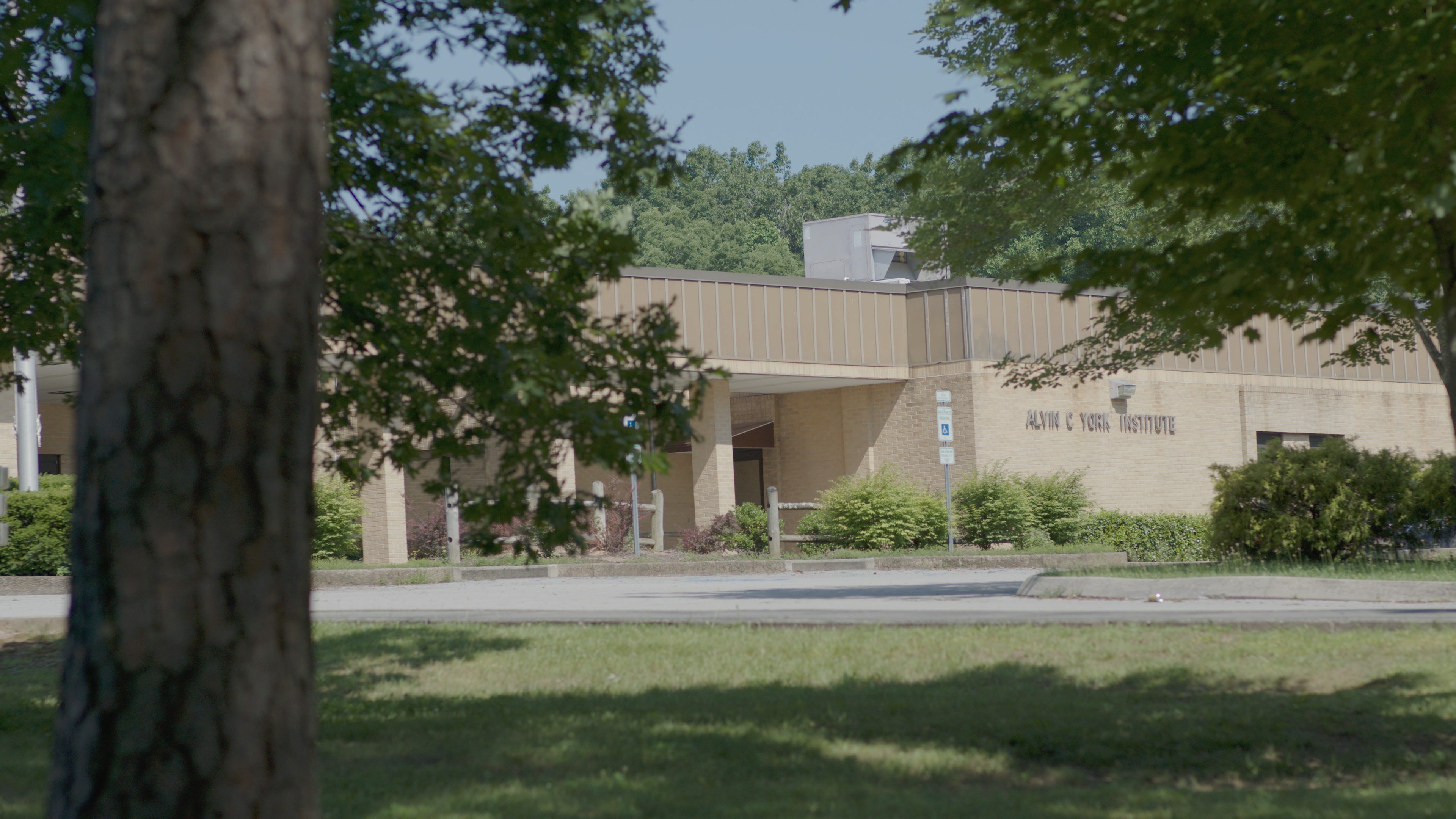
Alvin C. York Institute is one of the many rural schools that dot the Tennessee Valley, tucked in the Upper Cumberland of Jamestown, Tennessee. Its students are affectionately known as the “boys and girls of the mountain.”
Derwin Wright has spent decades at this school as a teacher, coach and now as an assistant principal. A few years ago, Wright assumed the role of director of operations. “In addition to attendance and discipline, I’m over facilities, transportation and school safety,” says Wright. “So, I’m pulled in many directions at times.”
Wright and two staff members manages the school’s energy use. He was approached in late 2019 by TVA EnergyRight and Volunteer Energy Cooperative to participate in the School Uplift pilot. Though Wright agreed to join, it wasn’t without a bit of skepticism.
School Uplift helps school districts manage their energy use
“I was sitting there thinking, ‘What in the world am I doing here,’” recalled Wright. It was February 2020. He had joined school administrators and faculty from 10 other schools for their first School Uplift meeting at the Fairfield Glade Conference Center in Crossville, Tennessee. Business and Industry program manager Clay Hoover and a team from TVA EnergyRight and local power company partners explained how they were all embarking on a 12-month journey to learn about and implement strategic energy management. It is a framework that empowers organizations such as schools to implement energy management actions and processes. The goal is to improve energy performance and save money so schools can maximize resources where it matters most — educating children.
It didn’t take long for Wright’s skepticism to fade as the EnergyRight team explored the many ways schools could cut their energy costs. “We were starting to see opportunities where we could make changes.” His team started adjusting the HVAC timers to ensure they weren’t running when people were not in the building. After inspecting equipment, they found a couple of HVACs had valves that were leaking and wasting energy. An old, inefficient chiller was completely replaced. Wright says it was a team effort from others on the campus, too. After one of the School Uplift meetings suggested behavioral changes had an impact on energy use, he convinced teachers to undo years of old habits. “We used to leave a lot of equipment plugged in during our downtime. Now before everybody goes home for winter or summer break, they defrost classroom refrigerators and unplug equipment they are not using. They shut everything down that they can.”

“Alvin C. York is Jamestown”
Using electricity, let alone less of it, would have been a novel concept in 1926, the year Alvin C. York Institute was built. Founded by Tennessee native Alvin York, a decorated World War I soldier, the school still boasts the largest campus in the country at over 400 acres. Less than a decade after it opened, the school and York were facing financial pressure from the fallout of the Great Depression. He transferred the school to the state government, and it has remained in the hands of the Volunteer State ever since. The Fentress County school remains the only secondary school in the nation completely run and funded by a state government. “There is a misconception that since we are 100% state-funded, we just snap our fingers and get what we want,” says Wright.
He admits it can be tough teaching kids in a rural county because the opportunities are not always easy to come by. The most recent U.S. Census statics show 20% of people in the area are living in poverty and nearly all the students receive free and reduced-price lunch. The county lost its only hospital three years ago. Wright recalls a thriving garment industry in the 1950s and 1960s that employed his mother. But the industry folded, so many left for places like Michigan and Indiana for better-paying jobs. “We’ve always been a poor community, but there’s a lot of pride in our community and people work hard,” says Wright.
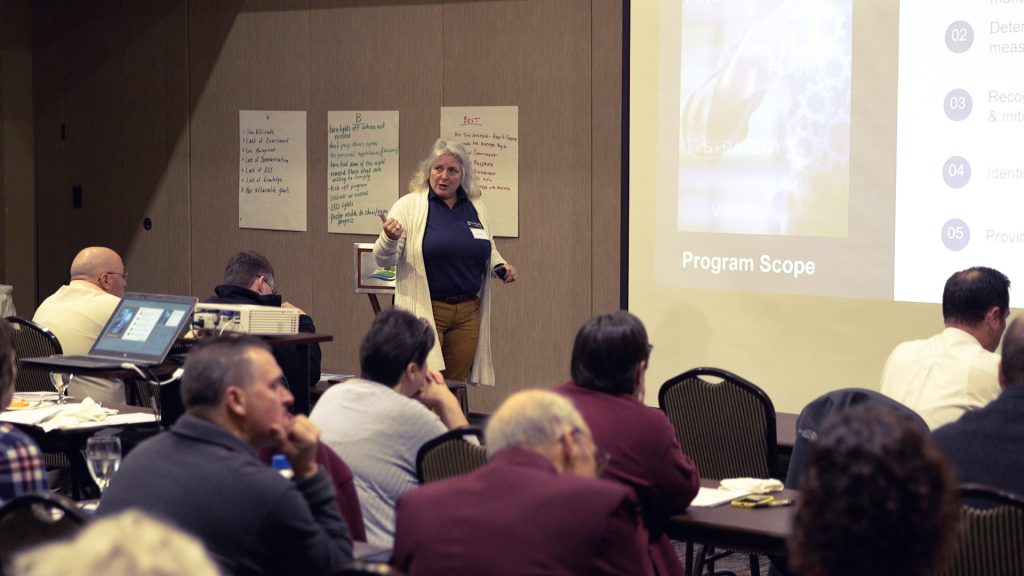
Wright grew up not far from the school, attended York Institute, left for college and briefly taught in the Nashville, Tennessee area before returning to his community. He says the school is the pride and joy of the community and has a way of pulling people back home. “Ninety percent of our staff graduated from here and we take pride in our heritage.”
As the rigors of another school year unfold into the ease of summer, Wright exudes a bit of serenity. He breezes through the hallway, not having to dodge procrastinating students making a mad dash to their desks before the bell rings. He doesn’t have to lay down the law with a misbehaving teenager or worry about the ones who show up in his office in tears. He doesn’t take off all his hats though. He still makes routine maintenance checks and turns off any lights left on by the staff still coming to school. As he’ll tell you, every little bit helps.
“I knew we would be saving, but it really was a surprise we saved so much”
Many school districts operate on a razor-thin budget. The risk of going in the red could mean teacher layoffs and program cuts that ultimately negatively impacting students. “We’re looking for any way to save money,” says Wright.
During the School Uplift pilot, Wright had his administrative staff track their energy use and utility spending. He could see the savings add up month to month, but couldn’t believe the school, in the end, saved $43,000 in energy costs.
“This is huge for us,” says a delighted Wright. “Absolutely every dollar that we can save in our budget goes back to our students.”
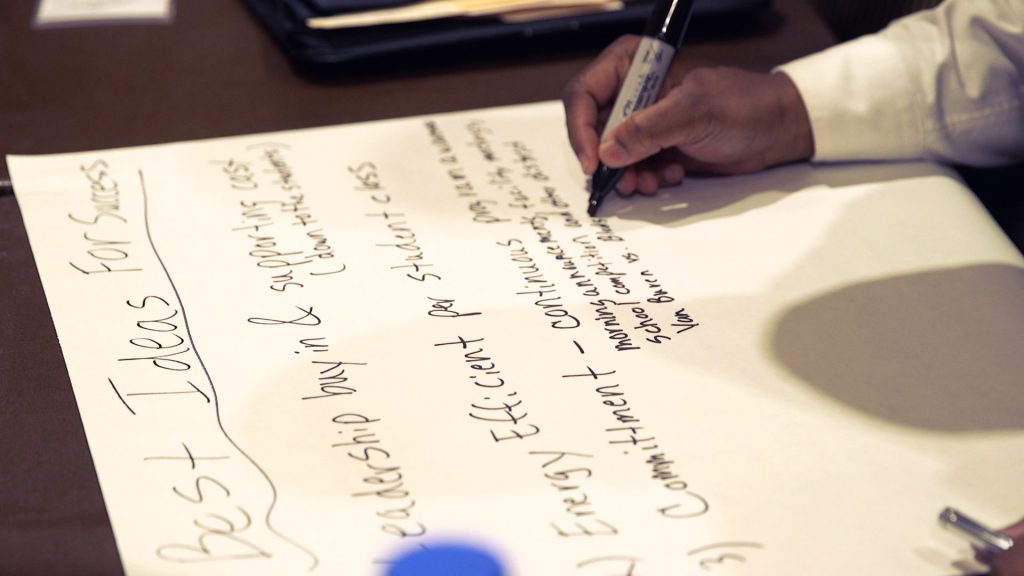
While the goal of the EnergyRight School Uplift pilot was to help schools save energy and money, the schools also competed against each other to achieve energy-saving milestones, with York being the first to complete all of them. Several participants received grants for energy upgrades and solar pavilions.*
“EnergyRight’s mission is to partner with local power companies to transform lives and communities with industry-leading energy services and programs,” says Cindy Herron, vice president of TVA’s EnergyRight program. “Helping schools save money on their energy costs and improve learning environments is an important investment in the Valley’s future.”
The other schools that participated in the School Uplift pilot include:
● Bledsoe County High School, Bledsoe County
● Pikeville Elementary School, Bledsoe County
● Pine Haven Elementary, Fentress County
● South Fentress Elementary, Fentress County
● Coalfield Elementary, Morgan County
● Sunbright Elementary, Morgan County
● Pickett County K-8, Pickett County
● Pickett County High School, Pickett County
● Spencer Elementary, Van Buren County
● Van Buren High School, Van Buren County
TVA is investing $7.3 million in School Uplift over the next three years to help 160 schools in seven states. The state of Tennessee’s Energy Efficient Schools Initiative is partnering with TVA and has provided an initial $600,000 in matching funds.
Many teachers will use their summer break to plan for next year, but Wright is already looking beyond that. He has a multi-year plan underway to replace all the lights with energy efficient LEDs.
“The impact of the School Uplift program will be felt for years to come,” says Wright.
To learn how School Uplift supports our region’s schools, visit EnergyRight.com/school-uplift.
*Sunbright Elementary was awarded a solar pavilion grant after the publication of this press release.
Stay Cool, Win Big: The Great Indoors Summer Sweepstakes is on!

Adventure is calling you—to the great indoors.
Oh, humidity—it’s you again. The heat has officially set in and our air conditioners are working overtime—which means, for many homeowners, energy use is on our minds. This summer, TVA EnergyRight® is making managing your energy costs a little more fun and a whole lot more rewarding—with The Great Indoors Smart Summer Sweepstakes.Grand adventures don’t always require gas money.
Discover ways you can save energy at home with the help of all the tools and resources available to you at EnergyRight.com—and boost your chances to win awesome prizes along the way. From uncovering everyday tips, to getting room-by-room guidance from an expert, take control of your energy use—and earn extra sweepstakes entries as you go. Enter once, twice or many times for a chance to win weekly prizes and one grand prize—the sweepstakes ends August 8!Explore the prizes:
- One Grand Prize: Home Appliance Package—This prize includes an energy-efficient appliance package worth $4,000.
- Weekly Grand Prize: A Set of Camping Gear—Give your electronics the night off. This set includes a top-of-the-line tent, lantern and cooler.
- Weekly Runner-Up Prize: Smart Indoor/Outdoor Outlets—Put your lights on timers and create voice commands to help lower your energy bills.
